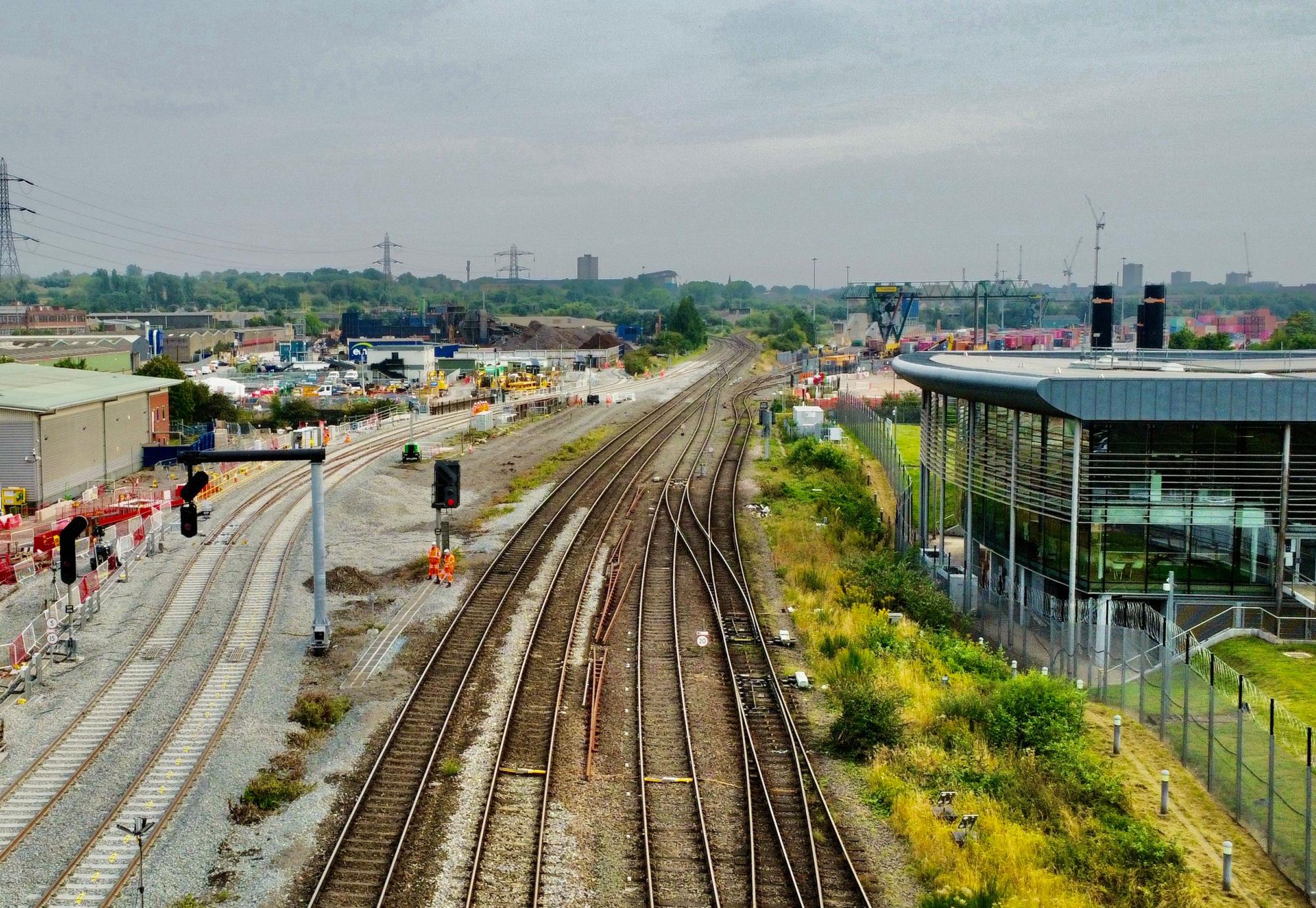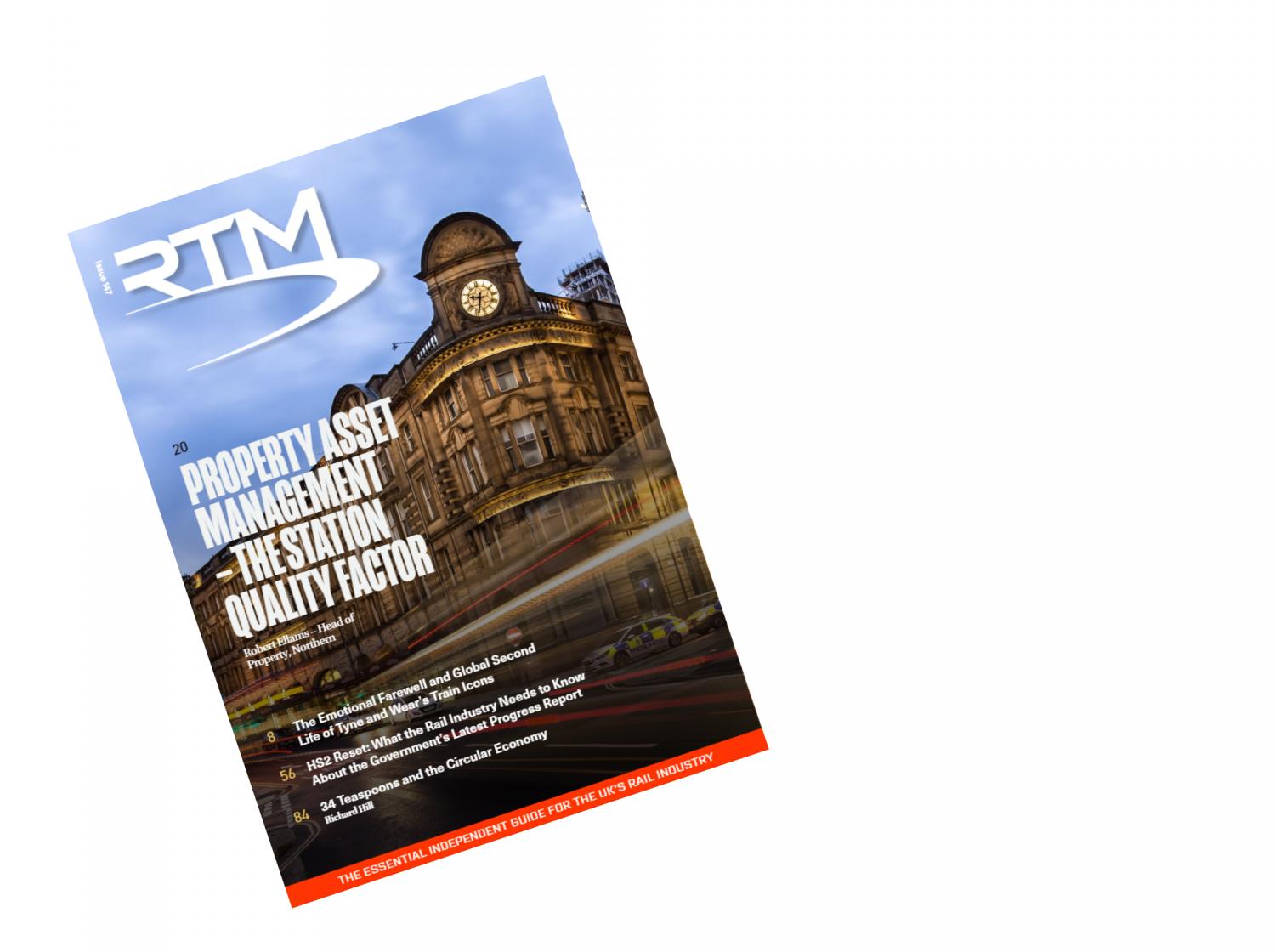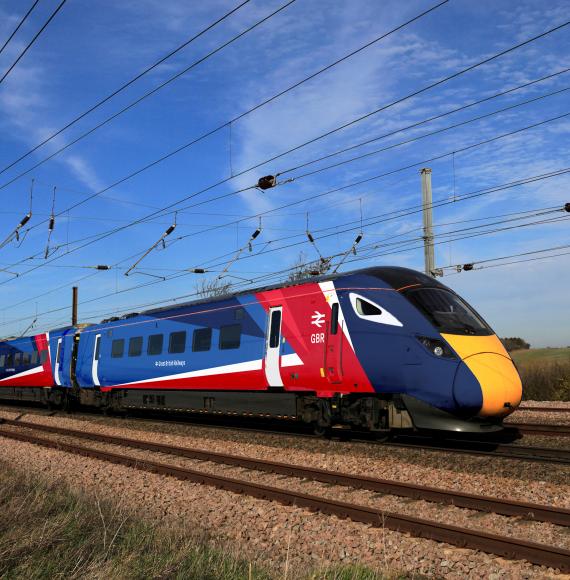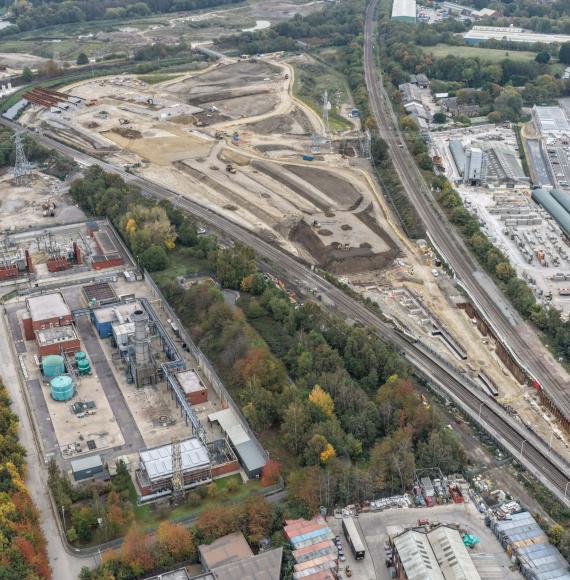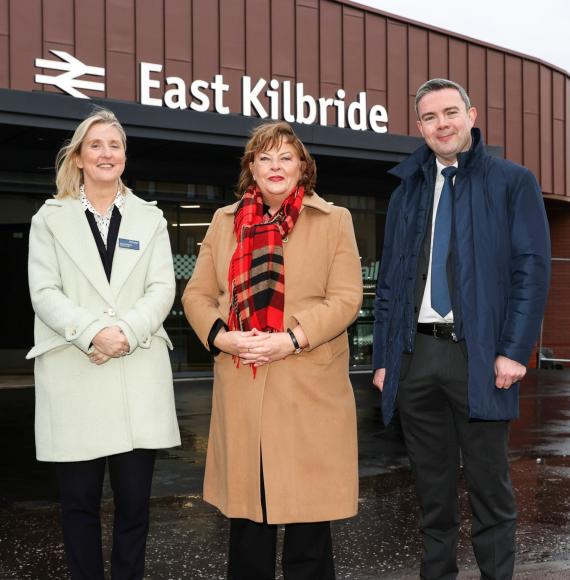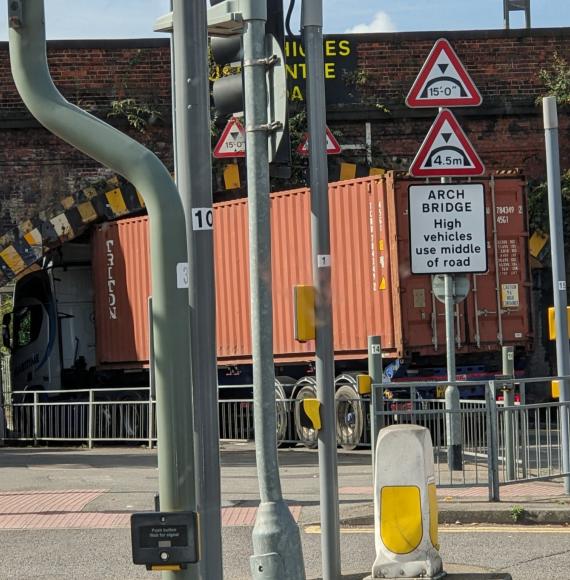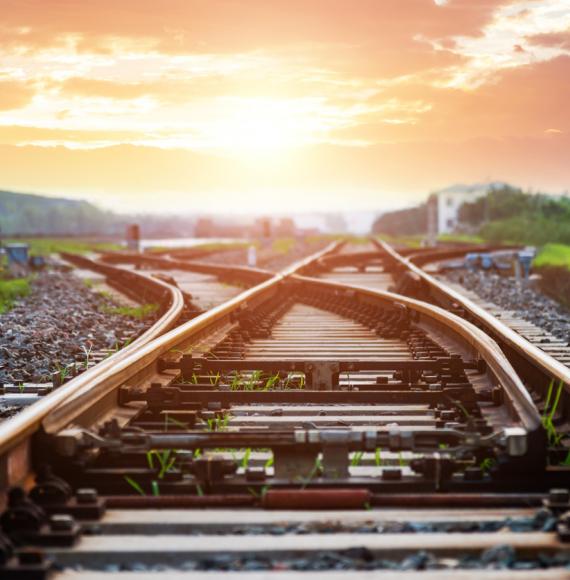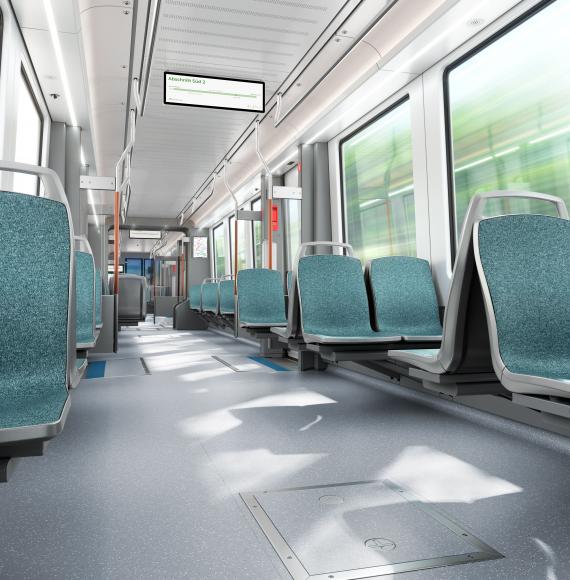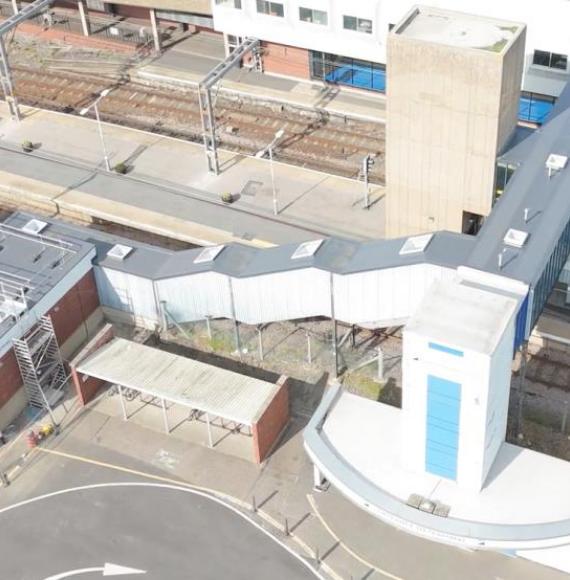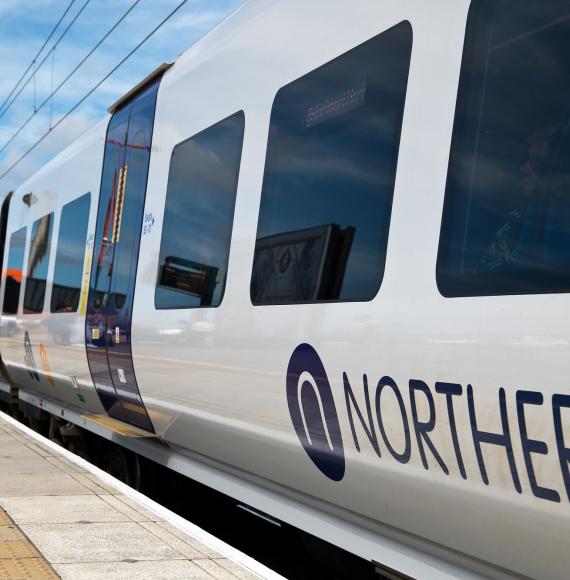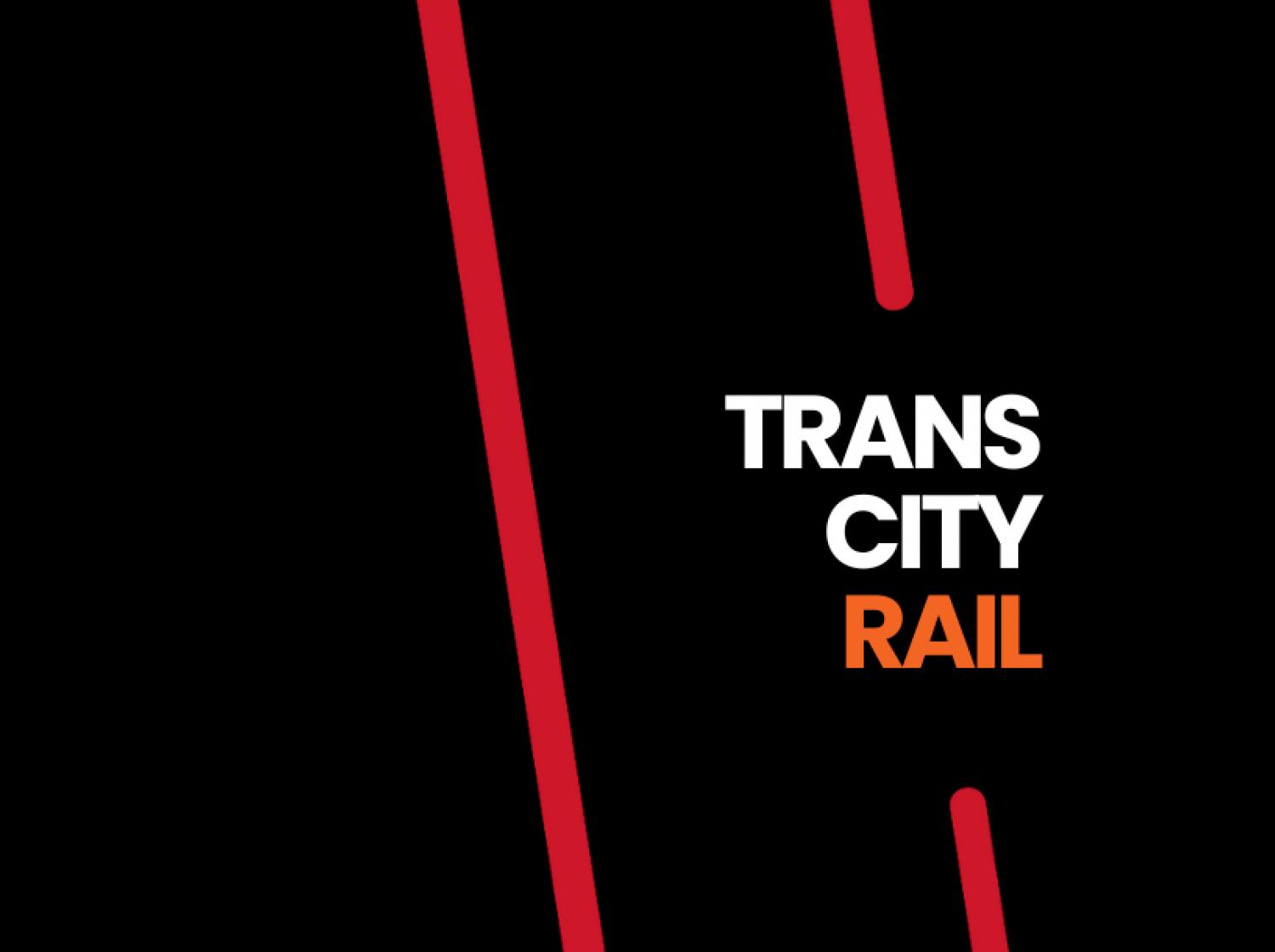The railway between Birmingham New Street and Coleshill Parkway has reopened after major track upgrades to improve journeys and in preparation for HS2.
Engineers worked around the clock during a carefully planned ten-day closure of the railway, which started on Saturday 17 August. The work involved relocating a railway signal and moving a section of track across a new bridge at Duddeston Mill Road built by HS2 and its contractor Balfour Beatty VINCI.
As well as providing passengers and freight services with smoother journeys in Duddeston, the changes to the track layout will allow HS2 to build a new viaduct which will carry high-speed trains into Birmingham Curzon Street station in the future.
In Washwood Heath, Network Rail engineers also replaced 450 metres of track and two 'crossovers' which are sections of track that enable trains to move from one line to another. A third crossover was relocated to help improve the flow of trains through the area. The vital upgrades will mean smoother and more reliable for passengers and freight services.
Patrick Cawley, director of ‘On Network Works’ for Network Rail and HS2, said: “Our major track upgrades in Duddeston not only pave the way for the next phase of HS2 work in Birmingham but will deliver benefits for passengers and freight services from today after the railway reopened this morning.
“I want to say a big thanks to CrossCounty passengers for their patience during the rail closure which also featured track improvements at Washwood Heath which will help enable smoother and more reliable journeys.”
Steve Hopkinson, CrossCountry’s service delivery director, said: “I want to thank passengers for their patience while this vital work was carried out which will deliver smoother and more reliable journeys for customers in the future.
“Though services are returning to normal again until Friday, passengers planning to travel this Saturday and Sunday – either to Water Orton and Coleshill Parkway, or through the Birmingham area – should check before travelling and leave more time than usual for their journey.”
Image& Video credit: Network Rail

